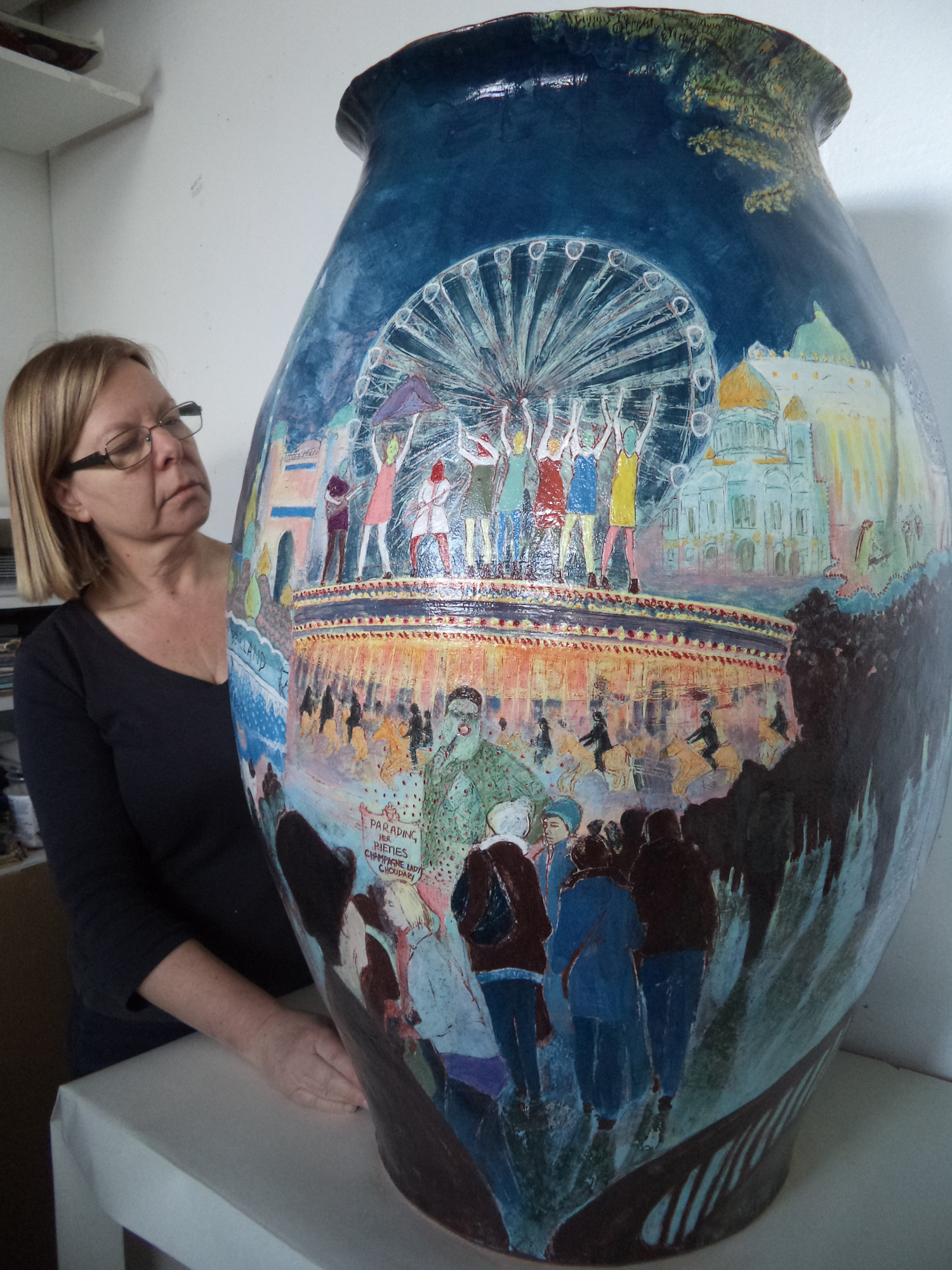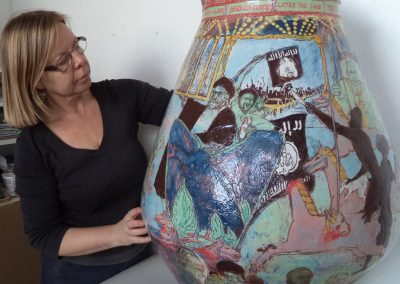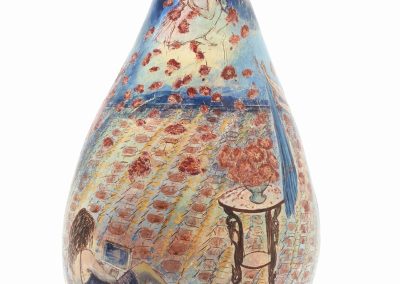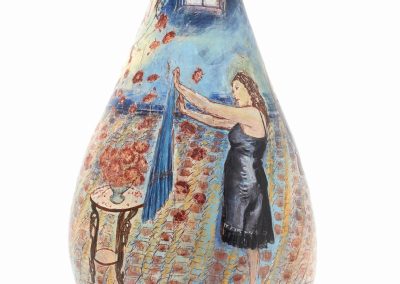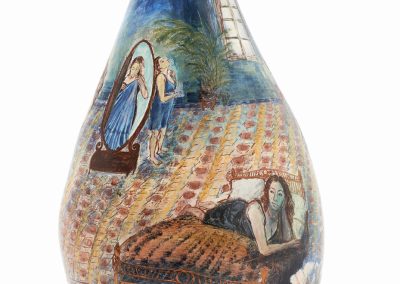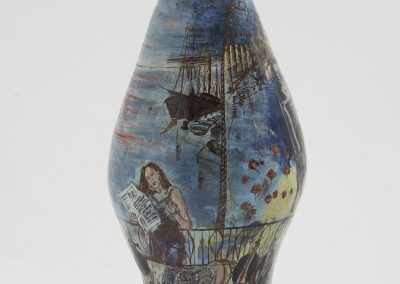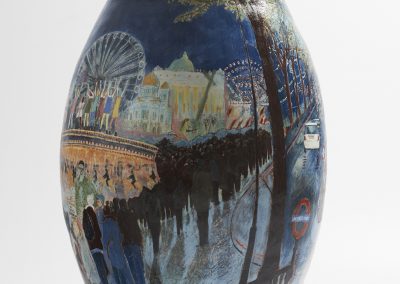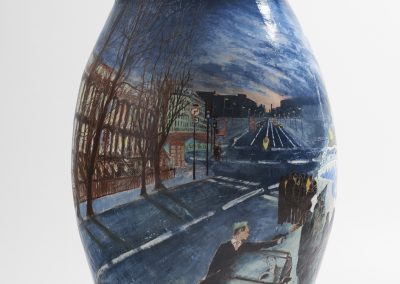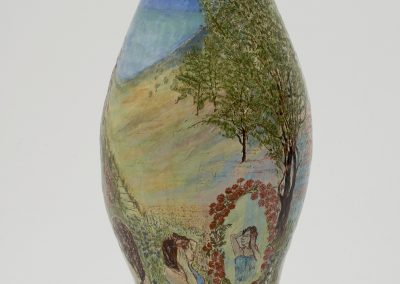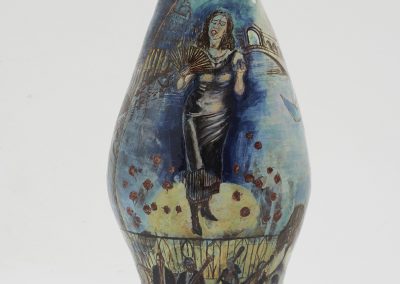8th – 30th November 2016
Bring on the Baroque!
Painted Pots by Claudia Clare
Statement
I make pots to record the effect of social change and historic events on ordinary, everyday lives. Ceramics are our museum pieces and our archaeological evidence: mine are the contemporary version. Feminism brings a sense of intimacy to stories I work with and to the political issues they illuminate. As part of our domestic lives, pots are easily recognised and understood and, as such, can act both as memorials and as a call for action.
Why I chose to make pots
I trained as painter, originally, and then turned to ceramics for both formal and narrative reasons. Painting on the curved surface, where the edges are defined only by the base of the vessel and by its opening at the top, was far more enticing than the flat plane of the framed picture. Low fired earthenware allows a vast range in tone and saturation of colour, while the curved, turning form animates the imagery and dramatises perspective. The narrative possibilities of the ceramic forms – their social, political, historic and human associations – have proved to be fertile ground for exploration.
How I make them
My pots are handbuilt, using the coil method. Before the first firing, I paint them with coloured slips – slips are runny clay with coloured oxides added – and draw through the painted image to produce the drawn line, (scraffitto). After the first firing, I build up more colour, clear-glaze them, and fire them again. Each pot has at least three firings – the third is for the lustre and enamels. Drawing and painting play a significant part in the making process. Snapshot photography from my phone helps me to record some of the most intimate and fleeting moments, providing images that memory alone might discard.
Biography
Claudia Clare trained as a painter at Camberwell School of Art in the 1980s, followed by an apprenticeship with Winchcombe pottery in 1990. She became a regular contributor to Ceramic Review in 1997 and completed a Phd at University of Westminster in 2007. She is known for her large-scale, slip-painted, earthenware jars that depict everyday scenes showing the impact of major events on the lives of ordinary people. She was shortlisted for the British Ceramics Biennial Major Award in 2013, and was represented by Francis Kyle Gallery until the gallery closed in 2014. She co-wrote The Pot Book (Phaidon, 2011) with Edmund de Waal and her second book, Subversive Ceramics, (Bloomsbury 2016) came out earlier this year.
Awards
Queen Elizabeth Scholarship Trust (QEST scholar) 1997
Churchill Travel Fellowship, (Churchill Fellow), 2001
‘Bring on the Baroque’ is the eponymous trio of pots that respond, in allegorical form, to contemporary stories of migration, war and religion. ‘Nightwalker,’ (2014), depicts London at night, from the point of view of my friend Hossein, an Iranian refugee, as he started his new life here. The second, ‘Postcard from the Caliphate,’ (2016), is a satirical response to the expanding conflicts in the Middle East, and the third, ‘Expulsion,’ (2016), is an allegory showing a furious God – or possibly his Prophet – expressing their displeasure to their delinquent followers.

